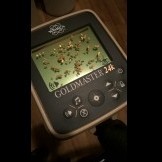Leaderboard
Popular Content
Showing content with the highest reputation on 03/24/2024 in all areas
-
6 points
-
Working in Iron trash is not a straight forward task. There are multiple variables and endless combinations. There also seems to be differences in terminology. Separation seems pretty plain to me. It is a matter of distance/ coil/recovery & coil control. Masking is all that and more. No matter what you call it, desirable non ferrous targets are influenced by the relatively “fat” signature of co-located iron. The co- located positions can be same plane 2D (rare), or some degree of 3D (common). They are both a matter of relative Signal response. The 3D factor is exponentially more crippling. You certainly can’t see these co-located targets in the ground, but you can make an educated guess based on digging a fair number of the iffy signals and some of the obvious small iron/nail signals. You can also successfully approach the site’s conditions by using techniques that are effective to some degree. If you want to have success, read & look at what competent iron sifters do. They learn, they test. They know detecting basics and they know their individual detectors like an old companion. Then, they dig those iffy hits you may very well walk right over. They also dig that big & mid size iron to get it out of the way. As far as “testing”, it is invaluable to me. It is how I come to know a machine/coil’s capabilities and limitations. Air/above ground tests are easy to setup and easy to visualize. They teach the basics plus things like down averaging of targets & audio signatures. In ground tests are more realistic. The more mineralized your soil, the more important they are. Target up averaging may show itself. In ground test targets are harder to set up but not too much so. You can visualize them with a diagram. This is where the post graduate education begins. Digging those iffy sounding compromised signals in the field, on your own sites, is the Internship that morphs into a career of being a successful hunter in the iron. This is from a relic hunters point of view, but applies to any type of hunting if the site is worn out. Digging some iron does not shame me. I don’t keep target ratios. I do find some neat stuff that surprises me almost every hunt. Tekkna, or any other specialty program can be great in the right circumstances, but they are special circumstances. I have used them myself. Now, can anybody give me some tips on hunting in Aluminum trash?🙃6 points
-
I'm running a production machine with the latest update. The target in the video appears to be matching the ground balance point. Each mode ground balances differently as is made obvious by the different numbers when in different modes. Could be a problem with coils or machines or both - I am not saying it is not. Just that with multiple machines using multiple coils with hundreds of hours in Australia, California, and Nevada I have not encountered any odd issues with one exception. On small areas of nearly pure black sand up at Tahoe the mono coils will not work and the DD coils barely work. I've never seen a situation where the mono coils ran better on bad ground than the DD coil - just the opposite. In Knomads case I'd try not ground balancing the detector to see if the target is being rejected only at that specific ground balance setting and coil in Fine mode as is shown. Trying other coils is always a good idea also. Again I am not saying there is not a problem or making excuses to try and explain anything away. I'm just saying my experience with the DD coils is not the same as yours Jeff. And for all I know maybe there is a hole in the Fine Mode when running a DD I am unaware of because I can't know what I am missing. I know Andy has also come to favor the DD coil over the mono.5 points
-
It is interesting to hear just how steady the Threshold is on the Algo on both of those videos.4 points
-
I was less than neutral about Minelab's Manticore when it was introduced. I wasn't negative about it but I certainly did not celebrate its release or the fanfare that went with it. I waited for almost a year before buying one. Thanks Gerry/Gerry's Detectors for making my Manticore purchase happen!!! I only started using it full time for coin and jewelry hunting around the last week of January 2024 when it warmed up enough here to melt most of the snow. We have had small amounts of snow and cool temperatures since with no hard freezes so hunting for deeper targets in moist soil conditions has been ideal and still is now after the 14" of snow melted from a recent blizzard. So my Manticore has been doing great (so did my Deus 2 with 13X11" coil during September and October of 2023) as far as detecting these deeper, challenging targets shown in the photo by giving me enough information to choose to recover them. Sure, I am digging some rusted nails too but my US wheat penny count for the last two months is 128 and I haven't dug anywhere close to 128 rusted nails. All of these silver, gold and copper target finds have been in public parks. All targets were at least 6" to 12" deep and there were no easy, totally isolated, no brainer finds. All were in high iron mineralized dirt that by itself would mask these targets using single frequency VLF detectors and these parks have plenty of trash to deal with and listen to. Plus, I have hunted these same parks extensively with the Equinox 800 and I did not find those 128 wheat pennies or the targets in the photo. With the Equinox 800, I would average 1 or 2 wheats a week, a silver ring or jewelry find once a week and a silver coin and gold jewelry find once a month at these same parks. I am using All Terrain General with the All Metal discrimination pattern and the ATG Preset default upper and lower ferrous limits unchanged, Normal audio theme, 5 tones with tone volumes, tone pitches and tone breaks adjusted for my preferred targets, recovery speed 4 or 5, and sensitivity between 22 and 24 with the stock 11" coil. Basically, I had no idea that this much silver was still left in these parks and I have only hunted 22 times during the last 2 months in parks that are old enough to have these types of targets. Thanks Minelab for the Manticore!!!3 points
-
3 points
-
After having seen others paint the keys on their Legend I decided to try something totally different. I used Glow Paint. It was tedious, and I can probably get another coat on it but this is how it looks both day and in darkness. I like it. Again, it was tedious due to how the paint is. I used a bamboo skewer to apply the paint inside the button indents. Wiped excess off. Found out it was easier to just coat the button and immediately wipe off excess. This is what it looks like after 12 hrs cure time. The paint used is Glow-on. I had some Neon Green on hand from another project but I'd prefer it to be blue. The stuff isn't cheap but a little goes a long way. https://www.amazon.com/Super-Phosphorescent-Sights-Concentrated-lasting/dp/B00GUA92RQ?ref_=ast_sto_dp Again, this stuff works best in multiple coats. What you are seeing is just a thin single coating. Will probably apply at least one more layer. But giving this 24 hrs between applications works best. Thought you might find it interesting. EDIT: Oh, I also installed a Skinomi screen protector to the display. In the picture it has a blemish but I have since wiped that off. I cut the piece to fit. It's a Matte version of their clear model. Really cuts down on glare in the sunlight.3 points
-
Doc put these fellas minds to rest quickly or we are all gonna end up sharing a padded cell🤪3 points
-
Yeah, I just love it when companies change websites and do not properly forward or replace links. That is the main reason I created the downloads area on this website, so I could link to stable resources like user manuals instead of creating an ever larger can of worms by linking direct to resources. I'd prefer direct links actually but this is a perfect example of why that does not work in the long run. I have linked to these articles numerous times over the years. Now Dave's are gone, only available on the Wayback Machine. I'll either link to the Internet Archive version, or put copies in the Downloads area to link to. When I get time and am in the mood I'll try and fix the various existing links in old threads. https://web.archive.org/web/20230719033501/http://www.fisherlab.com/hobby/davejohnson/searchcoilsessayrevised.htm https://web.archive.org/web/20230719033501/http://www.fisherlab.com/hobby/davejohnson/SearchcoilfieldshapeApril2012.pdf3 points
-
3 points
-
I would like to think the Algoforce and a legacy GPX would cover most nuggets sizes from small to big and deep. It might fall short somewhere in comparison to the high dollar overpriced detectors but I believe it would be pretty close in performance without hardly any large expenditure. I will be looking at this possibility when I get a Algoforce in the U.S… maybe someone that has both can report on this idea sooner.3 points
-
Any multi silver day is good in my book! If you’re interested, there are a variety of sites which will give you an approximate date for the shotgun shell based on the headstamp. https://cartridge-corner.com/shotgun.htm is one example. This is sometimes useful for dating sites when I haven’t found any coins.3 points
-
Another thing I'd like to mention for anyone considering taking a punt on an EPM is that the reporting requirements in Queensland are very strict.. We were told that a 'map with hotspots and a few photos of quartz showing colour' would satisfy the Department of Mining.. Although at first I thought 'you bloody beauty!' this turned out to be another 'alternative fact'.. I'm glad I finally got a hold of the station manager who told me that inspectors had closed down and fined EPM holders on the station three weeks ago for under-reporting.. Doesn't matter how remote the EPM may be, at some stage they'll come and have a look or at least go through your yearly reports with a finely tuned bullshit meter.. You also have to be aware of the new 'halving rule' (see below).. In our case we asked the company to put forward a business proposal as to why this 6.5 square kilometre EPM shouldn't be halved and be kept whole for further exploration.. This was accepted by the Department of Mines and met one of our requirements..3 points
-
Thanks again JP, that's exactly how it turned out.. This EPM isn't 'far apart' from the others, it's part of the station's fossicking areas.. I can't really say the exploration company was misleading us, it's just that they stayed away from answering direct questions on this point.. They made it sound like once you have an EPM it's yours to explore, they never mentioned having to share the place with other punters.. Just like they failed to mention that you're not allowed to camp in permit areas.. I also never thought to ask, assuming that camping there was all part of the show.. From taking to geologists working in Cape York, it turns out that the company was using the station's camp grounds (and paying camping fees) while they were prospecting this EPM.. I've also talked to the station manager and we've come to an agreement which will involve paying their $3000/year fossicking fee but allows us to camp wherever we strike likely ground.. He even said we were welcome to spend a week or two having a closer look at this permit area using the company's hotspot maps before we commit to buying.. But to compare paying $6500 for an EPM that we can't camp on to a station agreement where we can get stuck into any permit area which looks good (including the one we were interested in) is a big win for us.. Also, we've approached other cattle stations in North Queensland and we've never gotten the go ahead for a looksee on their land, Palmerville Station is a refreshing change in that regard..3 points
-
One thing I noticed in your video is that your headphones were trying to connect while you were going over the target in fine mode. The audio actually went blank. But 2 swings into you trying medium the headphones were not trying to connect. I've had this same thing happen when trying to film video where you turn off your headphones but the Axiom is still trying to pair with them and the speaker audio goes blank.3 points
-
Champion effort, it seems silvers are far harder to come by in the US and getting one seems a big achievement, so getting four in one go, outstanding.3 points
-
3 points
-
We've added a new mapping layer to the Land Matters Mining Claim Maps. You will find the new layer under the "Claims" mapping group on every mining claim map. It's named "Mining Claim Fees Paid". The mining claim maps start without the new layer displaying so you will need click the checkbox next to the layer name to begin using this map layer. This new map layer shows the total amount of maintenance fees paid to the BLM for each Section since annual Maintenance fees were begun in 1993. These fee totals are for annual maintenance only and do not include filing or locating fees or the costs associated with State recording fees. Mining bonds and permit expenses are not included. Each Section that has had claims during the period from 1979-2024 are represented in green on the map. The more fees that have been paid for the section the darker the green. Some sections may have $0 in fees paid yet show several claims. These are Sections where all claims were closed before the maintenance fees began in 1993. As you zoom in the amount of fees paid will be displayed in the section. In this example the Fees Paid are displayed between the normal active mining claims display. To get Information at any zoom level you can select the information tool and click on your area of interest will return a window with the number of claims and the total of fees paid in that section. As with all our mining claim maps the current or prior existence of mining claims does not mean that the area is now open to new mining claims. What are annual maintenance fees? Until 1993 all Mining Claims were held by completing a minimum of $100 worth of development work per claim per year. This was known as the mining claim labor requirement. If you didn't perform work on your mining claim each year before 1993 they became invalid. In 1993 Congress, at the request of the BLM, enabled claim owners to pay an annual fee of $100 instead of completing their annual claim development work. This brought in funds to the BLM to administer the program as well as relieving them of their responsibility to check existing mining claims for evidence of development work. No longer did the BLM need to do field work to administer mining claims. Since 1993 the annual claim fees have risen to $165 per year for each Lode claim and $165 per 20 acres for each placer claim. Placer claim fees can be as much as $1,320 per claim. Unlike other government programs the mining claim case administration system at the BLM is entirely supported by claim owner fees. These annual mining claim maintenance fees are paid directly to each BLM State office to offset the costs associated with administrating the mining claim case files. No public monies are used. Here are the totals by State of mining claim fees paid for the years 1994 - 2023 Arizona $507,229,955 California $385,681,600 Colorado $380,865,975 Idaho $307,600,865 Montana. $224,791,660 Nevada $1,523,212,855 New Mexico $190,491,505 Oregon $99,909,290 South Dakota $107,769,290 Utah $556,540,015 Washington. $53,075,435 Wyoming $468,886,230 Total $4,806,054,675 Nearly 5 Billion dollars have been spent by mining claim owners to support BLM mining claim administration. The BLM is now collecting more than 83 million dollars in mining claim maintenance fees each year.2 points
-
2 points
-
True round coils have the best performance and small elliptical coils are better for tighter areas and larger elliptical coils are better for patch hunting. If having around gram sized and smaller gold then any of the coils your looking at should work well. Spiral wound coils well give you better sensitivity and depth, but suffer from more ground noises, usually just lowering sensitivity can overcome this issue especially if you’re running in Smooth timing on the 4000. Smooth timing is described as having the best severe ground handling with some loss of target strength. So really depends how mineralized the ground is there. The 14x9” mono would be a good option for picking up most gold sizes around 12 inches in depth or less, a good all around coil.2 points
-
I recently purchased the Detech 11'' DD AI coil for my 4500,as yet not done any serious detecting with it as i mainly purchased it for one roman trading villa site which is right next door to a massive pumping station,also have the Coiltek 6'' Mono...but the coil that i have been using the most on the GPX is the Coiltek 14x9 Mono its as light as anything because its foam filled and that mainly stays on the detector almost all the time.2 points
-
Nice work Jeff. As you know I jumped on the M-Core early...I had been waiting for a faster and lighter CTX for a long time. Here in the east bay we have mostly modern parks so I'm looking for gold and silver jewelry only. This post made go back and look at the early threds I started... "a stroll in the park" and 'M-Core in nails" by my third hunt I realized the machine was deeper then the Nox 800 and said so in one of my posts. It was fun going back and re reading those threds.. the iron falsing thing and all the talk about it... I'm still on the fence about doing the up date as I'm still using the machine as it came out of the box and doing well with it.. I have one fresh water trashy black sand beach on the delta where it gives me fits... seems that it doesn't matter which program I try...the deus 2 is actually easier to use there. I will probably try the up date soon just so I can see if it will work on that particular spot now that I have the small coil. The equinox actually worked great there but you dug a lot of bottle caps. The dealer I got the m8 coil from said he thought the up date was a good thing... In my opinion machine is a park hunters and salt water beach hunters dream..once you learn how to use it. strick2 points
-
Thanks Knomad for your posts and your linked video. I can’t explain what is happening in it. All I can say is that I too have experienced some weird stuff using the DD coils in Fine Mode that completely stops being weird when I switch to Normal. Using Fine Mode with Slow or Medium speed while this is happening has no effect from my experience. Here is the video I sent to Garrett showing another instance of this odd behavior. This video is not showing the only time this has happened. I made the video to demonstrate what I was experiencing during long sessions with the Axiom in Fine Mode using the 11X7" DD coil with sensitivity at 3 or less and then switching to Normal Mode and the coil would behave normally. The ground conditions for the video were moderate to high iron mineralization and slightly damp ground. EMI levels were very low.2 points
-
I have not had any issues in ground balancing either DD that I have which is the 13x11 and the 7x11, both seem to balance great in Fine mode, I run my sensitivity at 4 or 5 sometimes down on 3, I do tend to run the 7x11 Mono more though, and I do not use the headphones that came with my Axiom, I use the relay that Wiggins from Avantree sent to me and the Avantree Torus exclusively also, the ground I detect Balances around 54-57 has been as high as 68 on the upper numbers and 44-47 on the lower number2 points
-
I haven't had any problems running the Axiom DD coils and actually prefer them over the mono for multiple reason. I know in fine mode on my machine there's no hole in the GB that's taking out. 22 brass or lead because I've dug multiples of each on various trips. One thing I would try is a frequency scan. In the video it doesn't appear the Axiom is ground balancing right in fine mode and maybe EMI is playing a part in that. I would try a frequency scan even if there's no auditable EMI being heard. I didn't notice what speed was being used either, I think medium is default, slow might be better as It let's less interference in. Other than that I don't know what be causing the weird response.2 points
-
Outstanding, I don't think the Vanquish gets near enough credit for how good it is, I'm completely happy using mine, killer machine and loves those silvers.2 points
-
Note that the Score models use Legend hardware. The buttons are of the same design as well. Yet, the score models have marked buttons.2 points
-
I use my 11x7 DD exclusively in Fine Mode and in the worst of ground with no problem.2 points
-
I watched the video, that's pretty bizarre. Especially for such a large target, hopefully someone with an Axiom can chime in with some help. I didn't even think it would be possible to balance out a 22 shell even if you tried.2 points
-
An 800g recent fall has been found near where Simon lives in Queenstown! Maybe I'll have to go and see if there are fragments of it still unfound. https://www.newshub.co.nz/home/new-zealand/2024/03/new-zealand-s-10th-meteorite-discovered-by-couple-sitting-in-queenstown-spa.html2 points
-
2 points
-
Currently pouring in Carson City. If you ever get stuck in northern NV post on 775 Off-road or NV4x4 on FB. People go above and beyond to rescue people that are stuck. They are pay it forward groups. No $ for the help.2 points
-
What is it about 1964 nickels ? They must have made a lot of them...I have found so many of those....I was saving them but now I just throw them in the clad bucket... strick2 points
-
I've been slow out of the gates for the 3rd year in a row, but hopefully I can follow through better than recently. I do have some ideas for sites I haven't hunted (and if I'm real lucky, no one else has either). But that needs to wait for summer. In the meantime.... A site that has produced modestly (Wheaties and a few silver dimes) in the past has a previously closed area that's opened up. I was able to get out last weekend and give the Manticore a chance. Here's what I found in 3 hours: The highlight is the four silvers, the best of those being the nearly uncirculated 1953-D Roosie. It's a very common date+mintmark but a bonus is that it's from my birth year. Wish I looked that good after 70 years. Maybe being buried in the ground is an advantage! 😁 (On second thought, I'll find out about that soon enough....) The denomination breakdown is interesting but may not be terribly meaningful: three 1-centers (two are Wheaties), nine 5-centers ('nickels), three dimes but two are silver (I'll take that ratio!), no 25-centers at all. Only three of the nickels have dates later than 1964. Has this area ever been searched? And how long has it been 'uninhabited'? Or did someone hunt it decades ago but ignored nickels, not wanting to dig beavertails? Note I found more nickels than imposters (five folded-over beavertails, a couple pencil ferrules, and a misc. scrap of aluminum). The shotgun butt (next to the padlock) is very likely from quite long ago given this area has been settled for longer than I've been alive. The small item left of the padlock is a piece of junk jewelry, probably a broken off pierced earpiece (plated copper with a blue glass 'stone'). I didn't photograph all the trash targets, but that's 2/3 to 3/4 of them. Surprisingly the two Warnicks (1943-P and 1943-S) show the gray patina that is representative of that population which have circulated but never been in the ground. Usually the acid in the soil eats off that surface, leaving the white metal (silver) finish. For one of the two I didn't even realize what it was until I got home and cleaned off the dirt. Only one coin was even close to being challenging -- the Roosie was 7 1/2 inches deep. I picked up a faint but clean signal with the Manticore 11" coil (All Terrain High Conductor mode). While investigating I turned up the sensitivity from 17 to 21, then backed off to 19 for the rest of the hunt. It definitely sounded louder at the higher sensitivity settings. (In my test garden it seems going much higher than 18 smears out the VDI resolution, getting worse the higher the sensitivity. That's why I've been using 17.) Anyway, I'm not done there so hopefully I can show more goodies in the near future. Quantity of hunts has been low but quality of finds the opposite!1 point
-
Diamond serial numbers are laser etched. But I’ve never heard of them being put anywhere other than the girdle. If it’s a standard serial number, you might be able to make it out with a 10x hand lens. However a stronger lens might be easier. These serial numbers are registered in a database as TTT2866 mentioned. So plug it in and see. You might be able to find the original owner.1 point
-
Yes Goldseeker is a member here and posts often...he has a thred right below this one at the moment strick1 point
-
As Okara said, with Prospecting Audio there are subtle but telling differences in target sounds. First off, if you don't want to dig iron, make sure your Ferrous Volume and Ferrous Pitch are set to your liking and are loud enough to be audible. I have my ferrous volume at about half of what my regular volume is. That grunt sound in addition to the red indication on your screen should eliminate digging iron if you so choose. Aluminum is tough. Learn the short hit sound of foil or tiny can slaw in the 12 and under range. It is different than a gold ring hit sound in the same range. Some may debate this, but I can tell the difference quite noticeably. There is a beach in my area just loaded with tiny can slaw everywhere. It is as if they replenished sand there with recycled aluminum mixed in on purpose almost. I have learned to pass on hits under 12 or so that don't have that "ring" sound after many hours of hunting this beach. You would wear out in 2 hours digging all the aluminum hits there. A ring will have almost a double "ding-ding" sound for lack of a better description. Junk aluminum that IS NOT ROUND will just have a wispy, short hit sound usually under a 12 ID. Round aluminum and pull tabs sound like a ring, nothing you can do about that....just dig it and see. If pull tabs are every 2 or three feet everywhere, don't dig 29-31 ID's even though they sound great. I still haven't dug a ring between 29-31, but I know some may have. It's always been a pull tab for me. Lastly, you say you're trying to use sound, not #'s. Not sure if you mean not looking at all at the ID #? I don't know why in the world you would not want to use the #s to check a target hit. I don't use the #'s either until I get a hit sound. Then.....use them. Time with Tom's settings will be your friend. I've used his settings with Prospecting Audio from day one 15 months ago and have no desire to use bin-tone type settings.1 point
-
Might as well post the whole lineup. https://www.amazon.com/stores/page/4FCE8C60-DEF5-4182-9EFD-C7D899F55914?ingress=2&visitId=f65d25d4-d113-4966-b396-137a02f4cc94&ref_=ast_bln I wish I had some extra cash. I would grab an F19 and F75.1 point
-
1 point
-
I'm using Tom's settings in the water with the M8 coil also. I don't think there is any way you can adjust any settings to make gold sound better. To me, gold has a smooth soft sound compared to coins or aluminum. In the prospecting audio every nonferrous target sounds pretty much the same. I say pretty much because I am hearing subtle differences on pull tabs or irregular aluminum, but I still dig everything that remotely sounds good. I too have audio responses from the smallest of targets that fall through the scoop or move around when trying to scoop them up. Sometimes after multiple attempts I move on. The audio response in prospecting mode is very short and quick. I think the more time spent on this particular mode is best for learning the Tom D settings. I hunt in Florida, so his settings are working for me. I don't think I will change to something else at this point.1 point
-
1 point
-
Yes. I think that some think they're going to find stuff directly under iron by discriminating the iron. I have seen that work but only in an air test with nails on top of a coin with an old Tesoro detector, the digital machines with DD coils simply don't do it. The Tesoro had a mono coil. I have never been able to repeat that "in the wild" 😅. I agree with your assessment completely. I knew that I would ruffle some feathers, thanks for playing! 🙂 Coil size, whether larger than the target with iron surrounding it, or small enough to get between the iron, coupled with a certain response speed (reactivity, recovery) is what will win the day. If there is enough iron present it will overwhelm the coil, so technique comes into play. The Deus 2 goes to 7 reactivity, imagine using that! 🤯 But the higher response speed, the less depth. 😵 @NCtoad posted a video where it was speculated that a larger coil might be just as good. I'm not a fan of Mr. Lemke but he does make a point, and NC showed us some nice finds. 👍 I tried it, it did seem to hit deeper stuff which I expected it would, but it also did way more down averaging than the 9" did. Air tests and even symmetric in-ground tests don't do much for me, try burying a silver dime and throw a handful of nails over it... 🤔 Which is about as real as you're going to get. 🫤 Seems to me the "witchcraft" of Tekkna comes from the forced conductor tone spread and reactivity. I use 2 reactivity mostly but turn it up as high as 4 when things get crazy, knowing I'm going to get more shallow targets.1 point
-
1910-1937 Signal Corp Brass; depends on the type of back attachment. https://www.germandaggers.com/Gallery/USCD.php Not a complete listing of all army brass but this one has what you have.. Nice finds. 1910-1926 screwback with a concave screwback, 1926-1937 screwback with a flatfaced screwback. Note that both are the textured brass with raised edge while the 37-43 is not textured, it is flat with no raised edge.1 point
-
Sounds like getting directions from a drunken woman.1 point
-
Ok , this is more of a possibility😆 (is this cheating?): Me: solve the puzzle: what could a gold prospecting invention be with the hints of paddle, pizza and a helicopter? Google Gemini AI: The answer to the puzzle is a suction dredge. Let's break down the hints: Paddle: This suggests something that scoops or separates materials, like a panning operation used in traditional gold prospecting. Pizza (round): This hints at a circular motion, possibly referring to the way the dredge extracts material. Helicopter: This implies something airborne, which could be the method used to deploy the dredge. Combining these clues, a suction dredge emerges as a perfect fit. It uses a rotating intake nozzle to scoop up underwater material and separate the gold flakes through a pressurized water system. Suction dredges can be mounted on helicopters for use in remote locations. EDIT: so now I’m thinking an air powered scoop that you attach to your Keene Blower- it spins and the blades pull in the materials….1 point
-
Thanks Erik. I’ve never been very comfortable with praise so I’m squirming a bit at the moment. The fact is I learned a great deal from others and did well, and this website was designed as being a way to give back. I taught a lot of people how to nugget detect giving classes in Alaska and nothing gave me more pleasure than seeing those people find their first gold nugget. It’s great that you and your son are able to connect via gold prospecting. So while my first instinct is to blow this off with a self-deprecating joke, I think in this case I’ll just say thank you.1 point
-
I thought you guys wanted to see E1500 finds, didn't realize you had size and depth requirements. I'm sure more performance orientated finds and testing will show as deliveries continue. I'd still be happy knowing it's finding these Nuggs and not missing them.1 point
-
Not so sure about my ability to be too technical 😊 but in essence conductive signals are salt signals created by moisture in the ground. Even in the desert there is sub soil moisture and particularly in goldfields because gold weathering from host rock involves a lot of clays being formed. The rocks on the land contain minerals, those minerals get absorbed by water after rain, the water then flows to the sea and evaporates leaving the minerals behind, that is why the earths oceans are salty. During rain events in the goldfields the weathered country also has concentrations of minerals on the surface of the ground this is due to oxidation just like rust on your car, when those concentrated minerals get damp the conductive signal increases dramatically and in some instances to the point that a metal detector is unusable or a coil that can handle conductive signals has to be used (like the DD coil supplied with the GPX6000). When conductive signals are present the response they create masks or hides edge of detection deep signals, the detector also becomes very swing speed dependant so a slow Motion filter becomes problematic (called recovery on a lot of coin machines), the GPZ 7000 has a Motion filter called Ground Smoothing when applied you can hear the threshold becoming more erratic and unstable but depth is lost so I never use it and instead focus on my coil control. Conductive signals are made worse by larger coils, this is because the conductive signal is seen from a very long way away from the coil. In wet conditions you can see this for yourself by lifting/raising the coil from ground height to above your waist, you will hear a loud long drawn out moaning sound as the coil is moved through an arc. So a smaller coil is recommended when the ground is damp which does not help ground coverage when patch hunting in wide open spaces. The other issue is damp mineralised clays, those can have a complicated effect on a metal detector, especially a highly sensitive machine like the GPX 6000, or GPZ 7000. They produce a combination of conductive signals and another effect on micro magnetic particles in the soils which are impossible to ground balance out, these signals can sound very target like both sharp and shallow sounding and also broad and edge of detection deep sounding. The wetter the ground the worse they are. A key to identifying these is coil control and sweep speed. There are a few immutable things about a motion detector, if using a consistent range of motion relative to the depth of a target (that’s the amount of distance the coil needs to be swept relative to the ‘lead in’ and ‘tail out’ positions of a target, basically from the point the threshold starts to change from the left to right and the other point going back the other way from right to left), then two factors have a bearing on a “real” target over a ground generated one. One is the height of the coil relative to target, in other words the closer you get to a target the louder it should get (very dependant on ground effect (for another discussion another day)) and the speed of the sweep. If the range of motion is maintained but the sweep speed is halved then theoretically the target response should effectively double. A conductive target like response will not do this and will get quieter not louder. In other words, in damp conditions slow down. The reason we move the coil is because the detectors are motion detectors (coil needs to move relative to the target to generate a response), the coil movement is all about the receive aspect not the transmit, moving the coil allows you to investigate any weak fields created by a target, the receive coil of the detector needs to move through the field created by the target, these fields will be thousands of times weaker than the transmit so require careful coil control to manifest properly. Hence why it’s so important to have good coil control, being prepared to vary and control the sweep speed and maintain a good range of motion when investigating edge of detection targets. Accurate ground balance, consistent coil height, good range of Motion and constantly tweaking the swing speed are all vital skills for working successfully with a metal detector, especially in conductive areas. You get all these things into alignment and deep targets jump out at you. Hope this helps JP1 point
-
Biggest issue with going larger coils with an extremely sensitive PI is the conductive signal. Open areas like WA are really bad for conductive signals and will punish an operator if they go too big. You can use a GPX 5000 with a large coil for prospecting which is less prone to conductive signals but then you lose that tiny nugget sensitivity of the GPX6000 which can be the on;y clue to a good patch or gold being in the area. The GPZ7000 has the same limitation which is why NuggetFinder built the Zsearch 17x13, a good compromise between sensitivity and coverage in vast open spaces. I’ve used one of the early proto 16x10 Nugget Finders in WA and found it to be a very nice blend of quiet running and good coverage with very good depth, it’s like a plumped up 12x7 Xceed. It’s still a work in progress and had to be put aside all of last year due to a number of factors. There are only so many hours in a day, the demand for the 12x7 was off the charts and still is by all accounts. JP1 point
-
Those tiny coils were meant as a pinpointing probe, John Kah made them himself I believe and are a stacked mono which is why they're so high (tall). They came with a switch attachment to direct the signal from the coil to the probe and vice-versa. Haven't been made since the 2200 was new I reckon 😉1 point



.thumb.jpg.d71314a45f3dc82bf75ac1b96e7e9201.jpg)



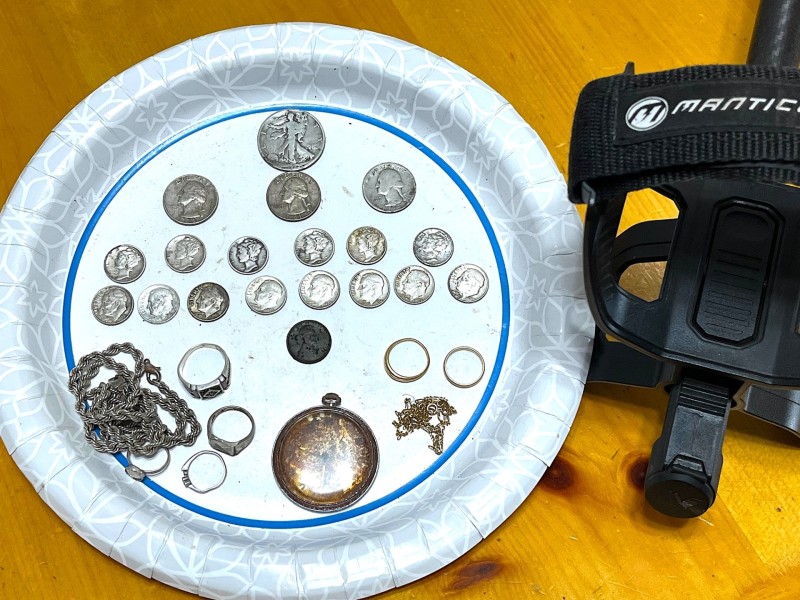
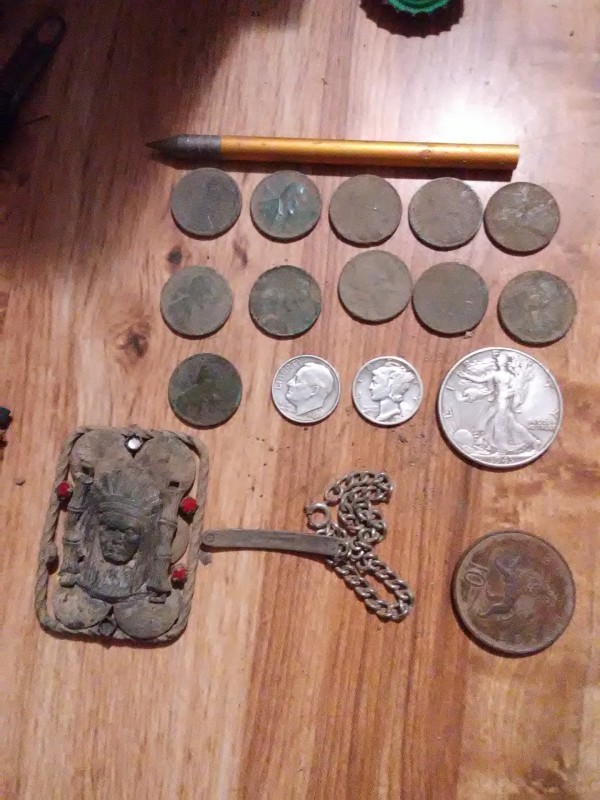
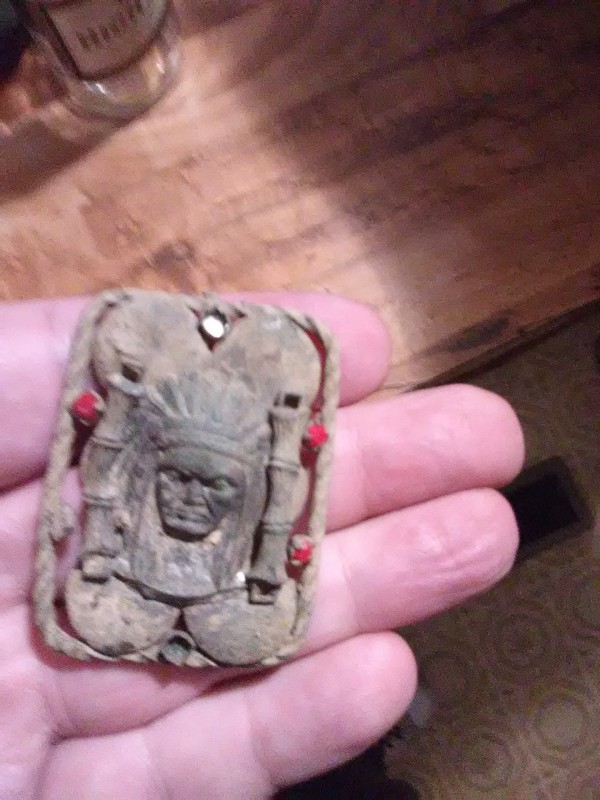

.thumb.jpg.77e4cb5bf39d44bdd2050d2edb7dfdb1.jpg)
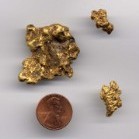
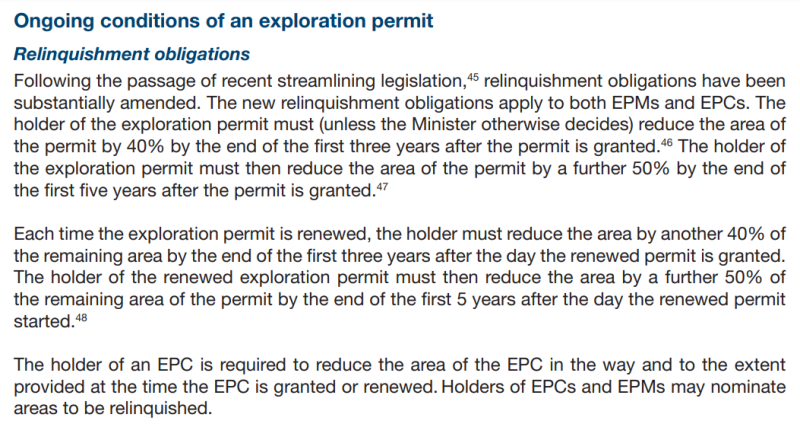


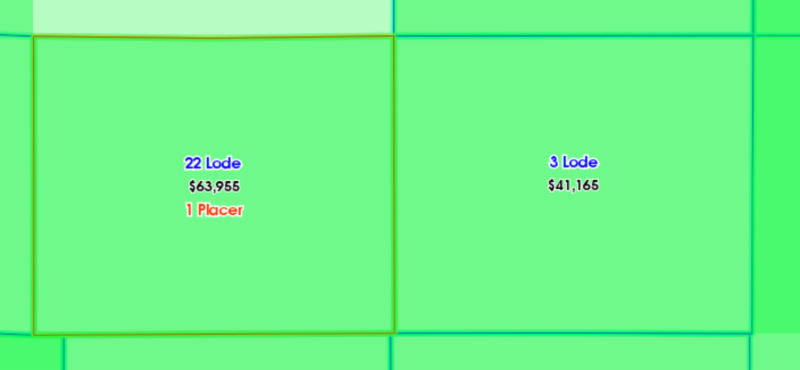
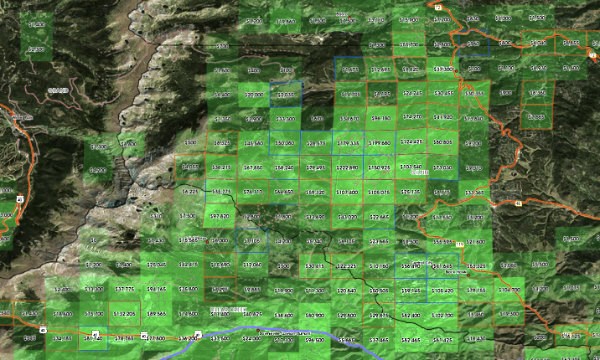
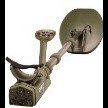






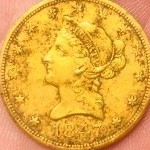

.thumb.jpg.95344db3aeef0a4c6c73420daa366191.jpg)
.thumb.jpg.8761b3d9b3da119b9e6d1912f67275ad.jpg)

